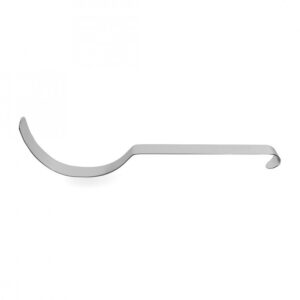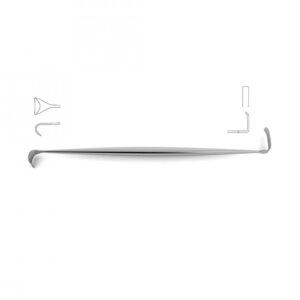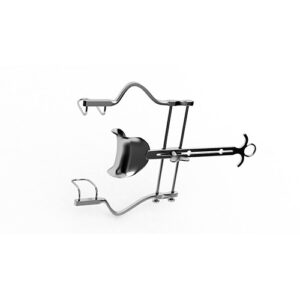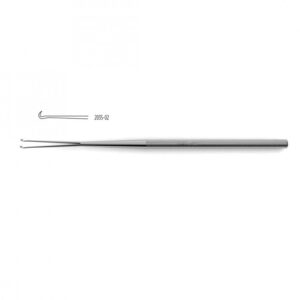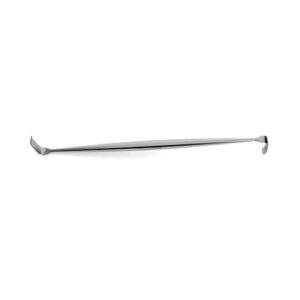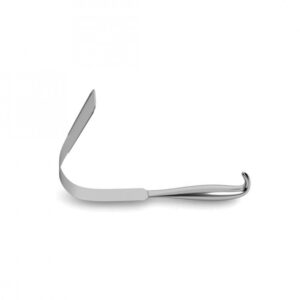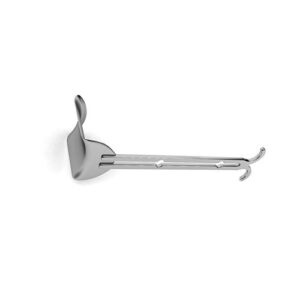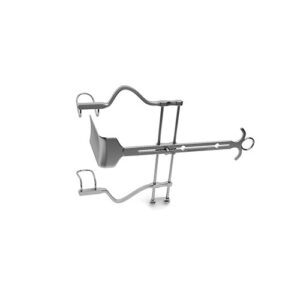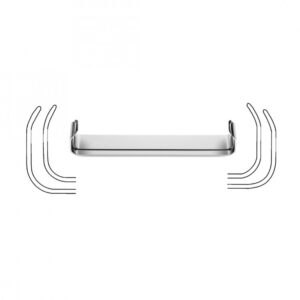| Name | Cushing Vein Retractor – Fenestrated Handle |
| Lead Time | Lead time advised within 48 hours of order placement. |
| Specialty | General Instruments-Hooks & Retractors – Retractors |
| Material Finish | Stainless Steel |
| Grade | Premium Operating Room |
| Units of Measurement | Each |
| Manufacturer | seemab surgical |
| Sterility | Non-Sterile |
| Usage | Reusable |
Cushing Vein Retractor – Fenestrated Handle
Cushing Vein Retractor – Fenestrated Handle
fenestrated handle
Cushing Vein Retractor is a more light-weight instrument due to its fenestrated handle. The lengths can range from 9″ to 16.” This vein retractor can be used during general surgeries to retract veins or other small tissues. It may also be used in other medical procedures such as neurosurgery to pull back tissue.
SKU:
VI-01-504
Category: Hooks & Retractors
Description
Shipping & Delivery
Related products
Cope Retractor
Double-ended, 6.0 mm & 11.0 mm, 7-1/8" (18.0 cm)
Cope Retractor is a double-ended surgical instrument primarily used to pull back skin or organs that may obstruct the operating area. The main features of this retractor are its different shaped blades. For example, one end contains a strongly curved blade with a lip. The other end, however, contains a sharp, right angle blade with a ridge on the tip.
Abdominal Retractor W/ Fixed Side Blades – 2 1/2″ Deep
w/ fixed fenestrated side blades, 2-1/2" deep & center blade #2470-72 (3" x 2")
Balfour Abdominal Retractor with Fixed Side Blades incorporates 2 ?" deep fenestrated side blades that are attached onto the center blade, which is 3" wide x 2" deep. Two different sizes of this retractor are offered according to the maximum spread they provide. The side blades of this particular retractor can be pushed and held away from each other to open up an incision in the abdominal cavity.
Barsky Skin Hook
Knurled handle, 6" (15.2 cm), sharp
Barsky Skin Hook can be used in various medical procedures where skin or soft tissue needs to be maneuvered, such as procedures involving plastic surgery or ophthalmology. The knurled handle contributes to a better grip for the surgeon, and the hook at the end contains a sharp prong that can be single or double. The high quality stainless steel used to produce this instrument may help to prevent bacteria from adhering to its surface during an operation.
Davis Retractor
Double-ended, 5.0 mm x 16.0 mm & 8.0 mm x 21.0 mm blades, 5-1/2" (14.0 cm)
Davis Retractor is a stainless steel instrument that is double-ended and has opposing blades on either end. This retractor is able to divide and keep edges of an incision open. This instrument is also protected by the seemab surgical manufacturer warranty on defects in materials and workmanship.
Glass Abdominal Retractor
Abdominal Retractor
6" (15.2 cm) x 3-1/4" (8.3 cm), 9-3/4" (24.5 cm)
B.E. Glass Abdominal Retractor contains a flexible blade with a strong curve that is affixed to a handle for gripping purposes. This type of retractor is intended to be used during surgeries that require retracting or exposing the organs in order to provide better accessibility for the surgeon.
Balfour Wide Center Blade
Balfour Wide Center Blade
for detachable balfour retractor systems
Balfour Wide Center Blade features a wide blade that comes in two different depths depending on the area that needs to be retracted. The basic purpose of this instrument is to keep the edges of an incision separate, such as those in the abdominal area. Furthermore, this center blade is specially designed for the detachable Balfour Retractor Systems.
Balfour Abdominal Retractor W/ Fixed Side Blades – 4″ Deep
w/ fixed fenestrated side blades, 4" deep & center blade #2470-73 (3-3/8" x 2-1/2")
Balfour Abdominal Retractor with Fixed Side Blades contains fenestrated side blades that are fixed onto the instrument. This retractor is primarily used during surgeries in which large abdominal incisions need to be held open to provide more visibility to the surgeon. Moreover, the instrument is offered in different sized spreads to accommodate different patients.
Collin Retractor
Collin Retractor
double-ended, set of 2, 6-1/2" (16.5 cm)
Collin Retractor is designed to push back tissue that may conceal part of the area that is being operated on. With the help of the rounded double-ended blades on each end, damage to tissues is reduced while they are held firmly in the desired position. Depending on the size of the incision, this retractor comes in a set of two.



